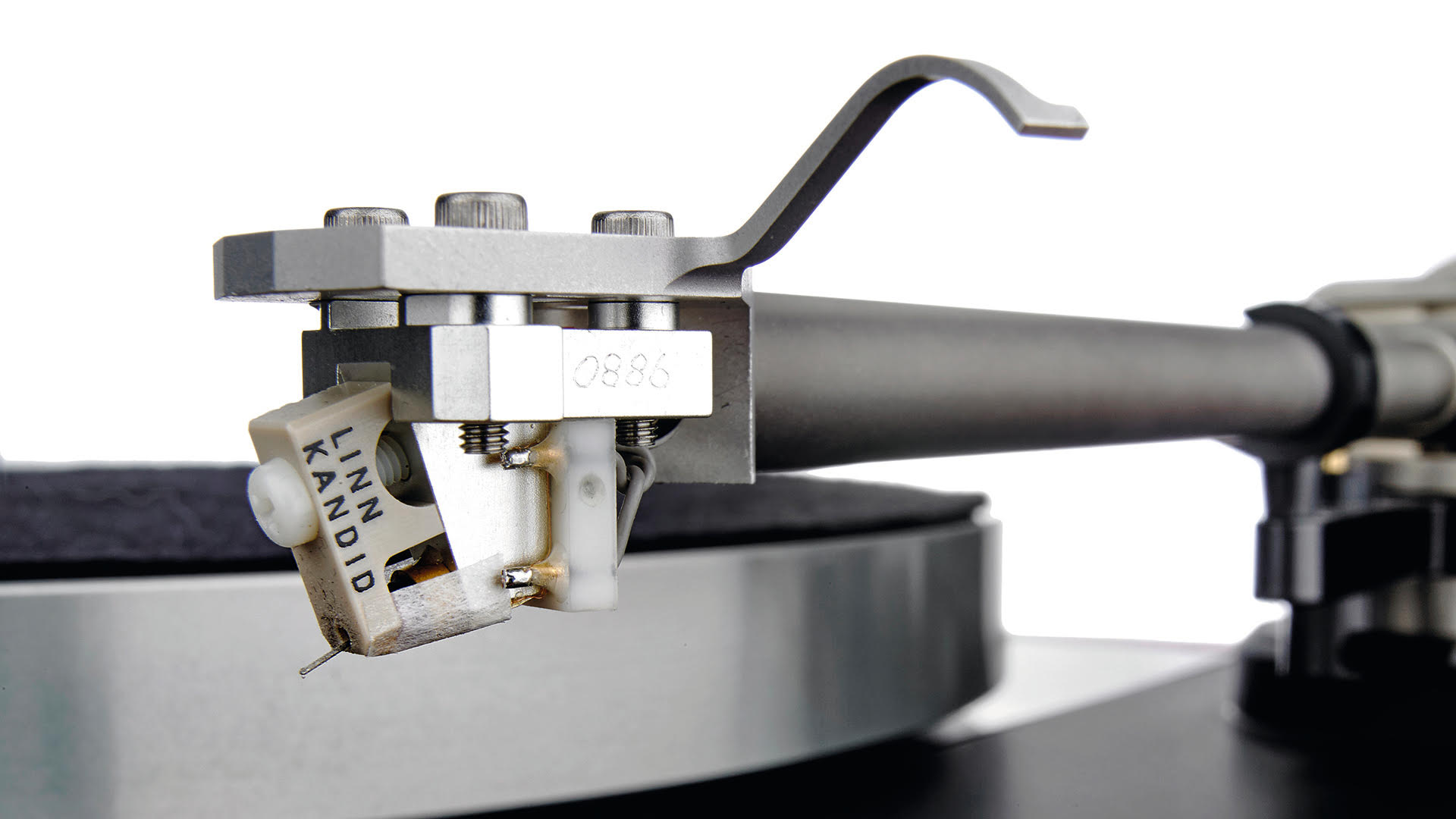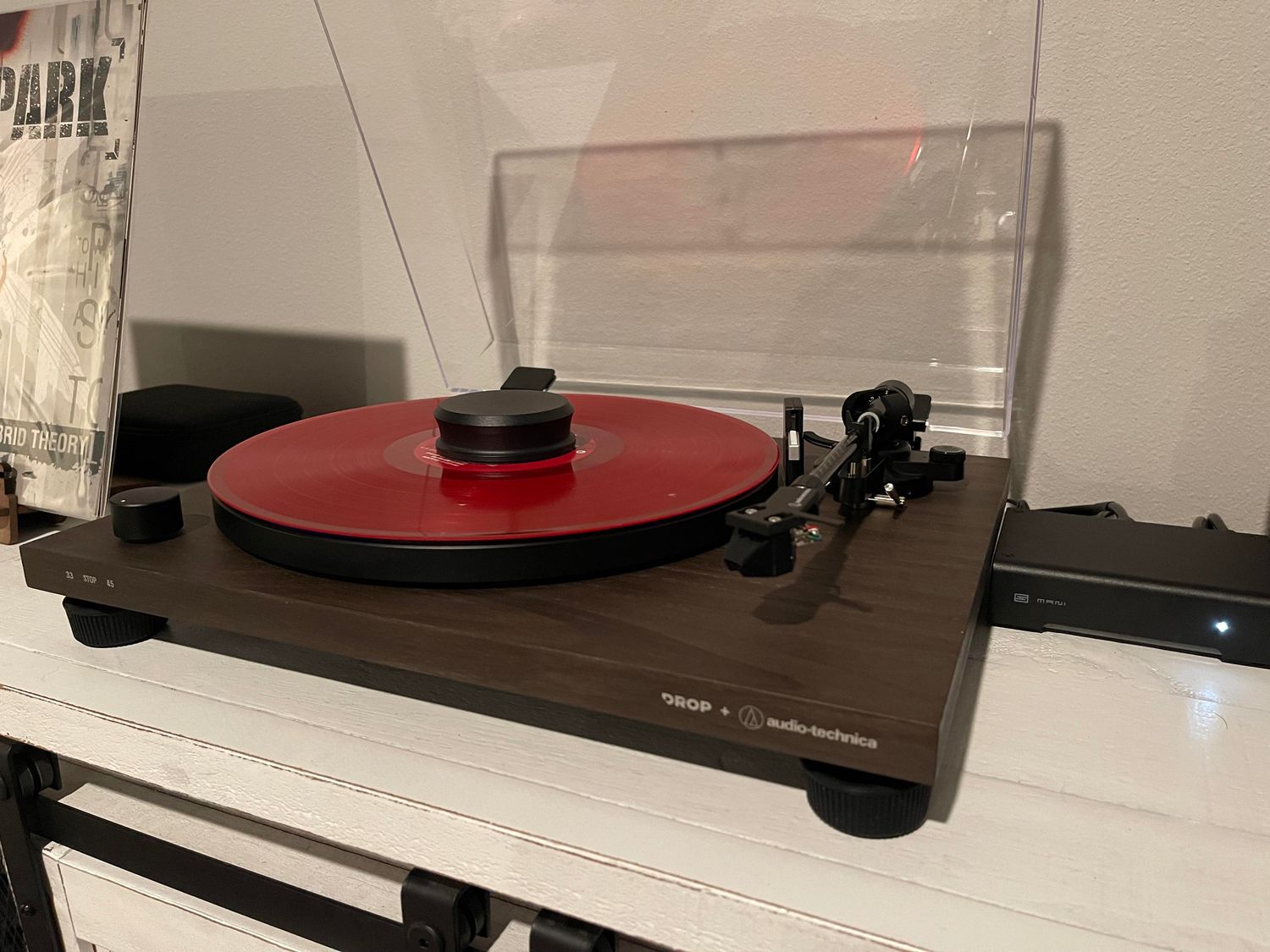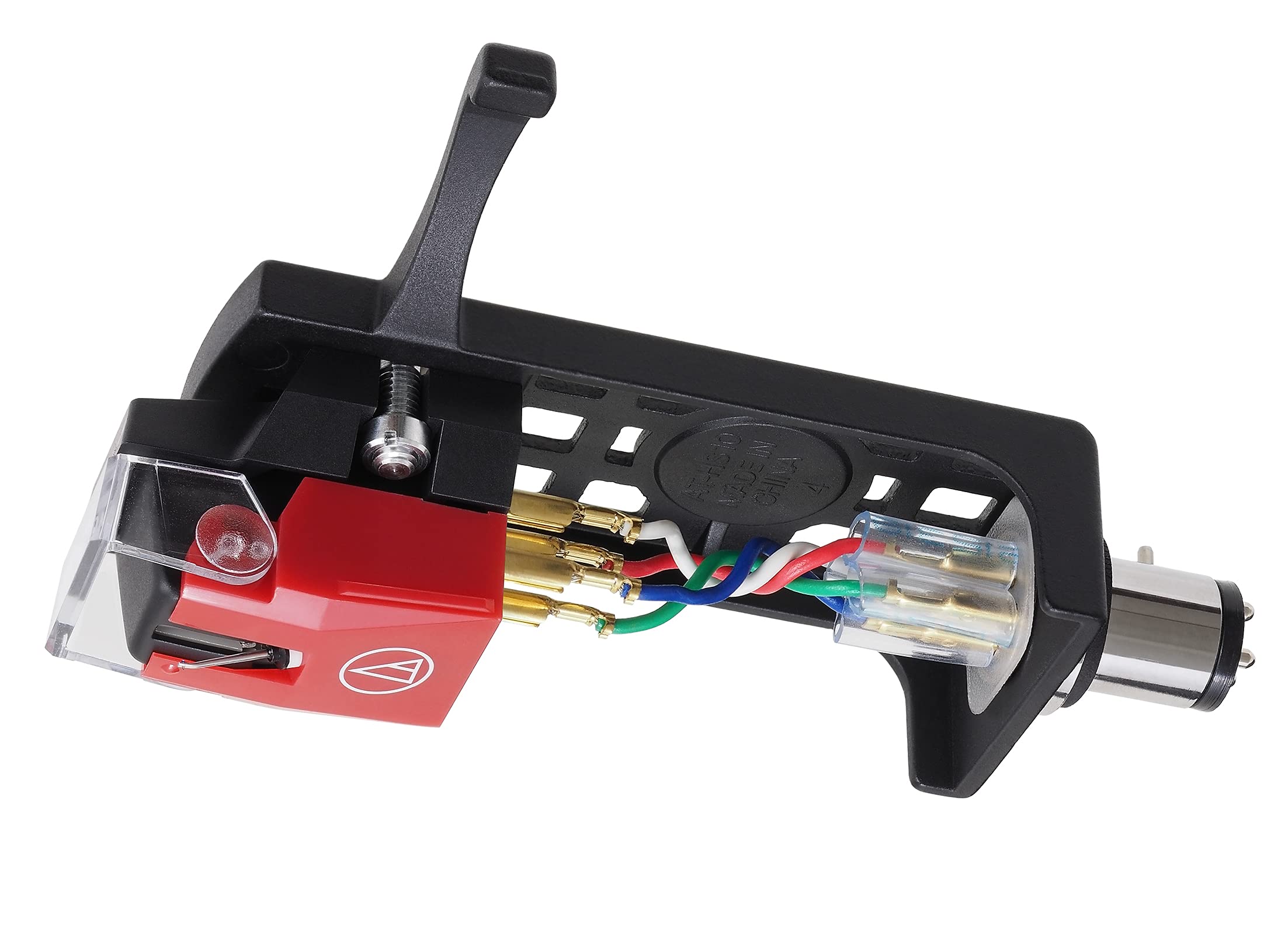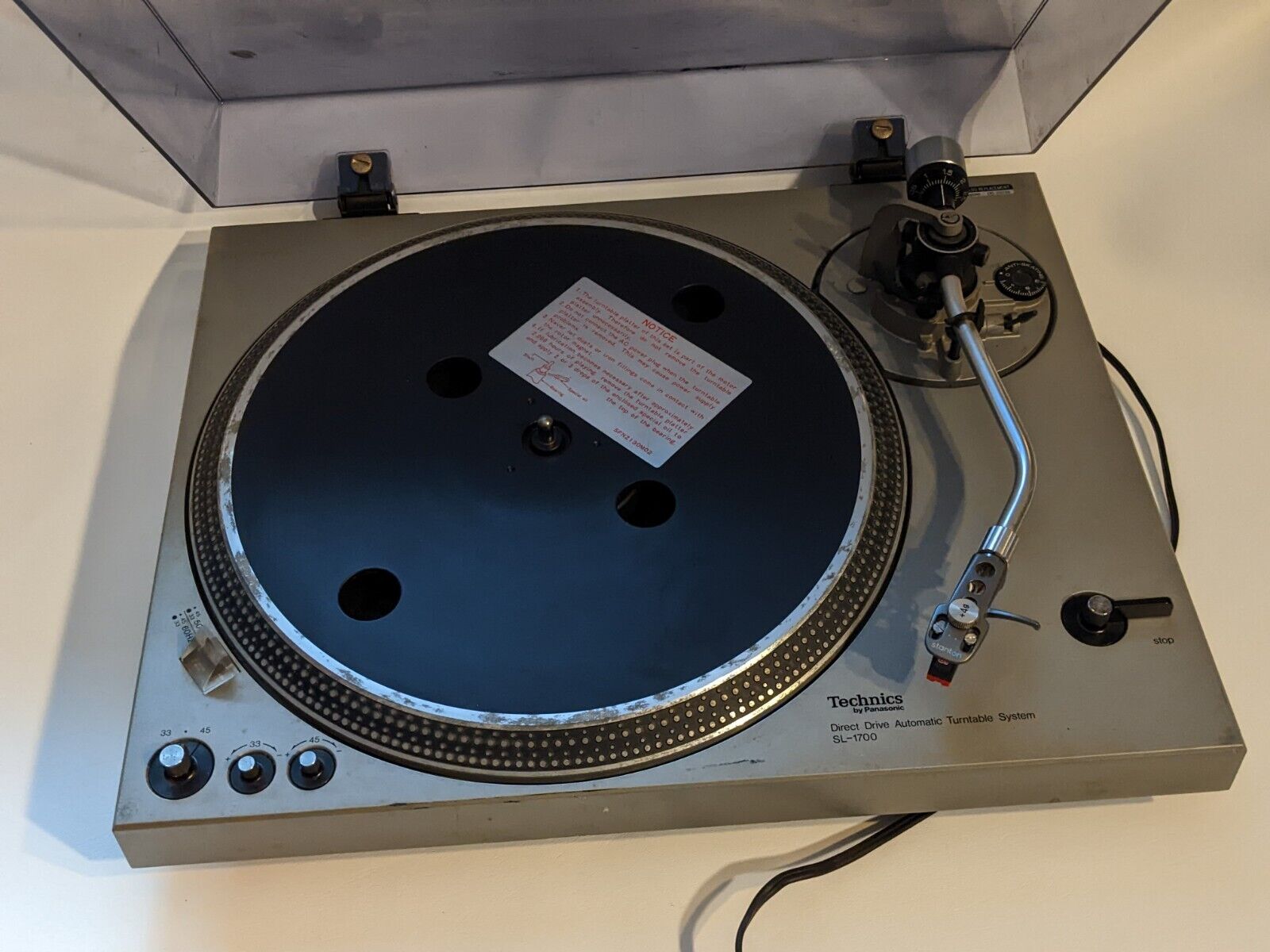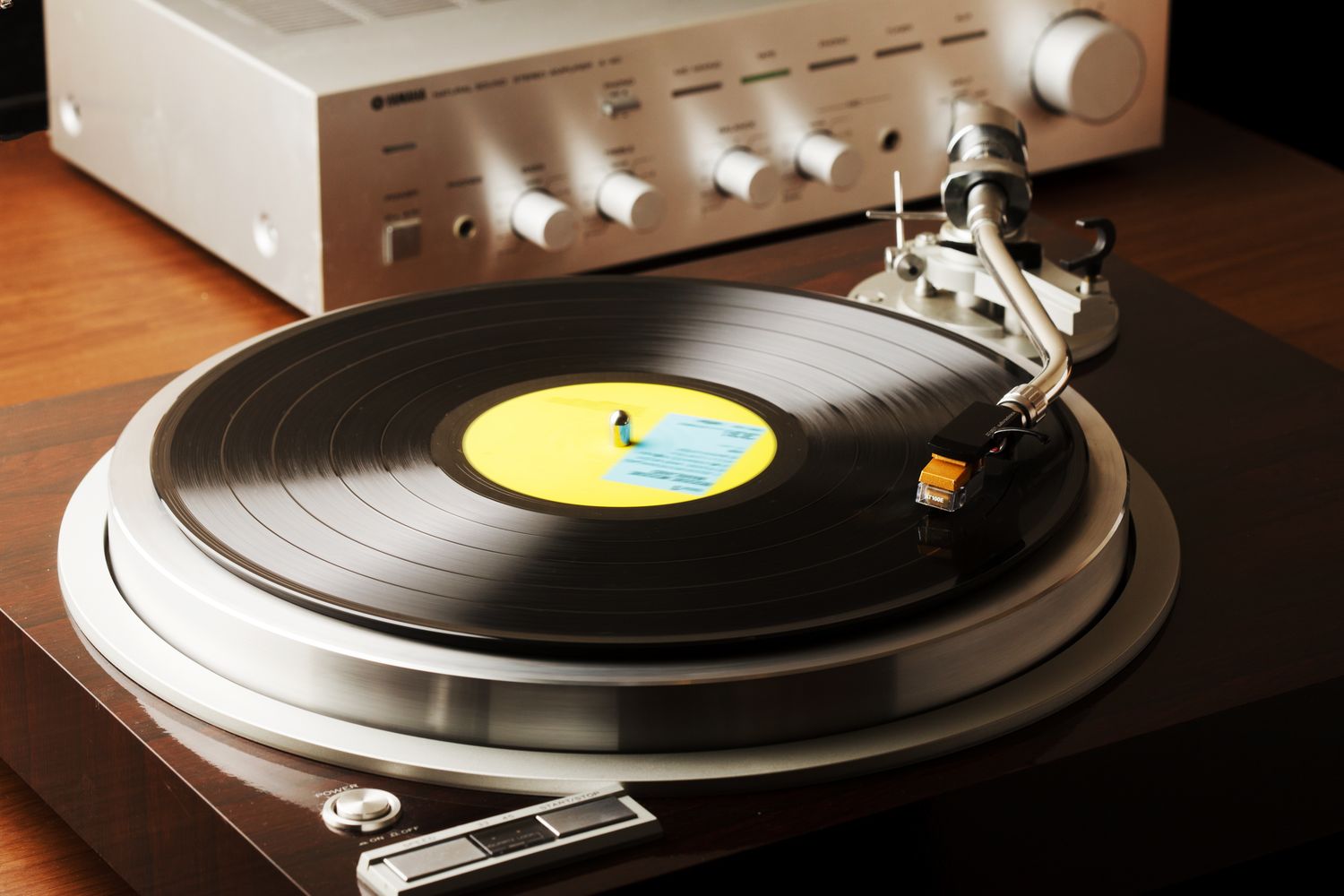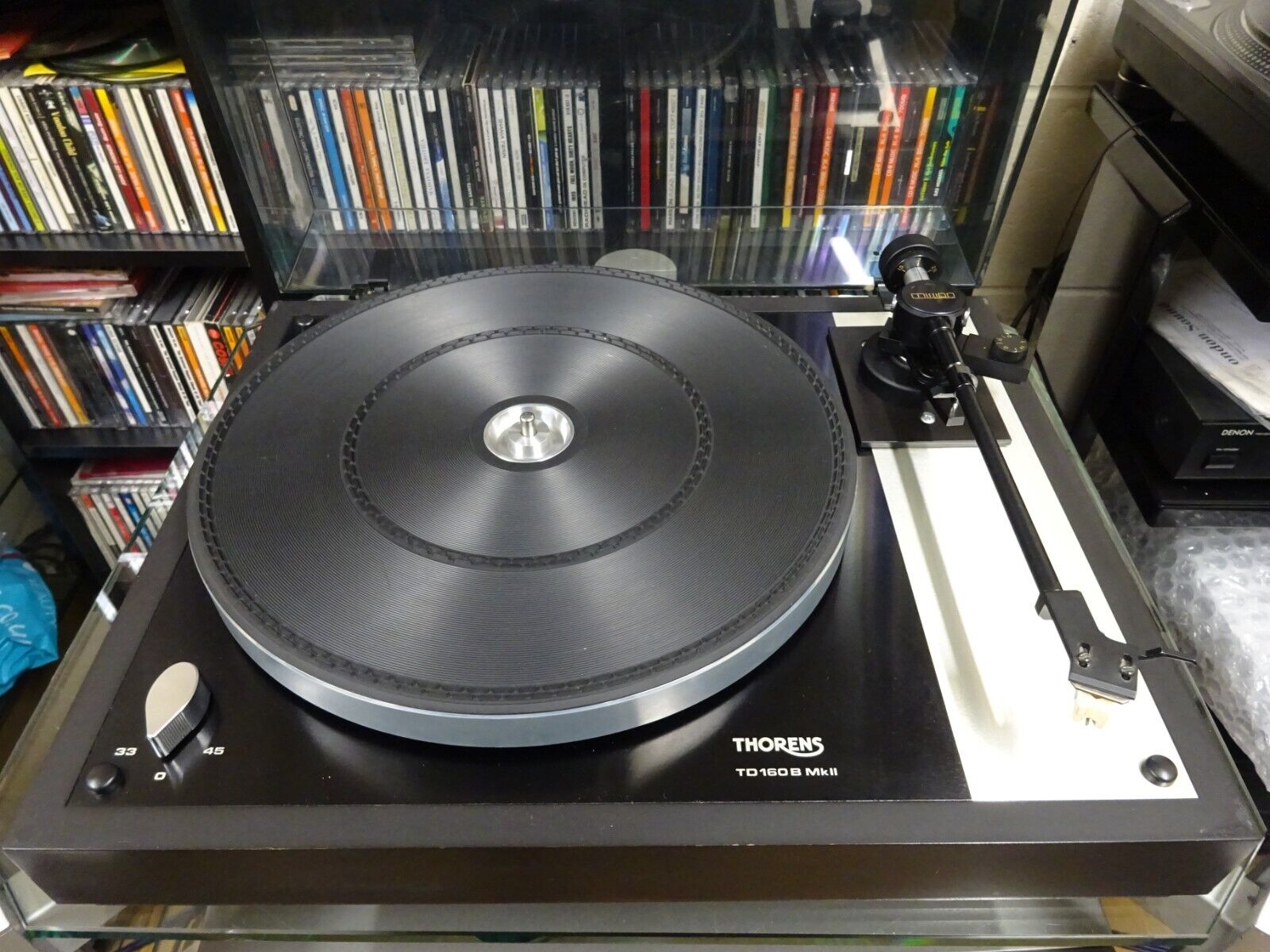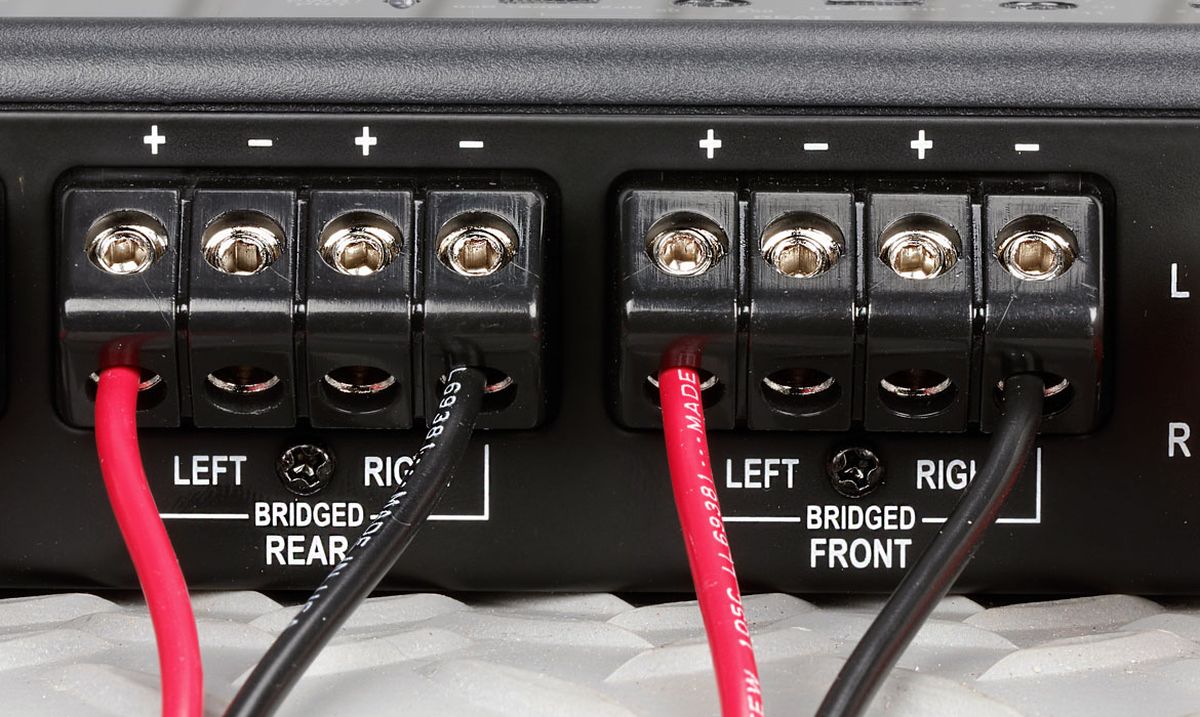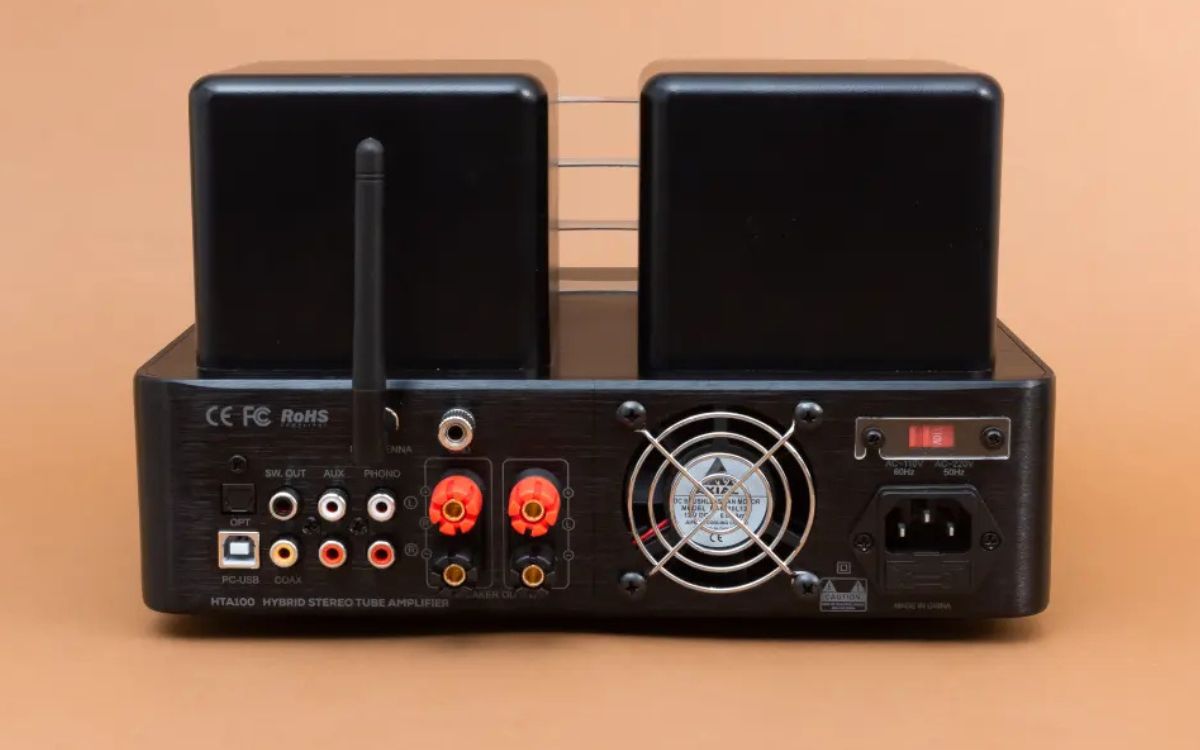Home>Devices & Equipment>Turntable>What Amplifier For Turntable
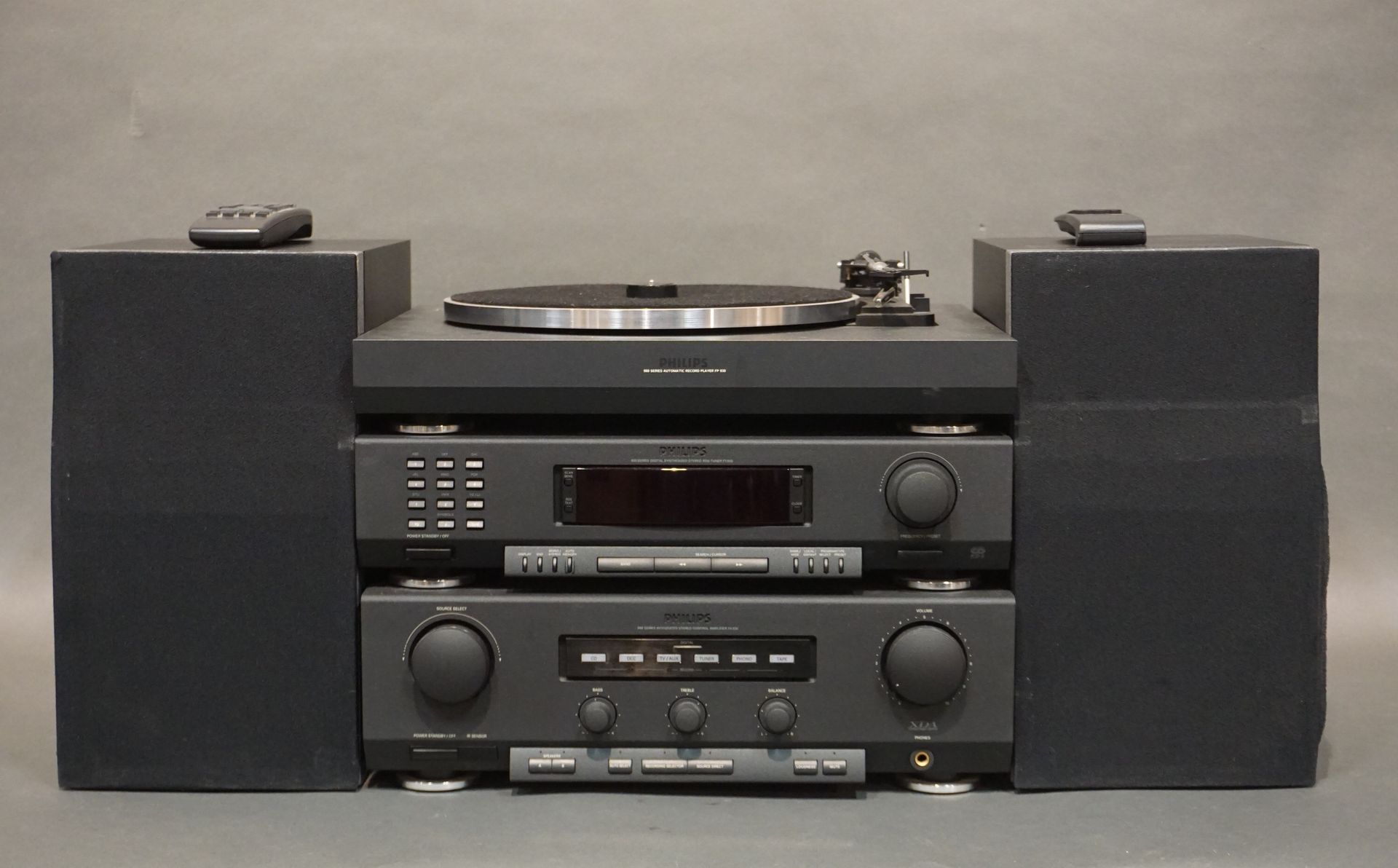

Turntable
What Amplifier For Turntable
Modified: January 22, 2024
Looking for the perfect amplifier for your turntable? Discover top recommendations and expert advice to enhance your vinyl listening experience.
(Many of the links in this article redirect to a specific reviewed product. Your purchase of these products through affiliate links helps to generate commission for AudioLover.com, at no extra cost. Learn more)
Table of Contents
Introduction
Welcome to the world of turntables and amplifiers! If you’re a music enthusiast or an audiophile, you know that the right amplifier can make a world of difference in the quality of sound produced by your turntable. Amplifiers serve as the intermediary between your turntable and speakers, amplifying the weak signal produced by the record player and delivering it to your speakers with enhanced power and clarity.
Choosing the right amplifier for your turntable is crucial in achieving the best sound reproduction and maximizing your listening experience. With various types of amplifiers available on the market, it’s important to understand their features, specifications, and how they can complement your turntable setup. In this article, we will delve into the world of turntable amplifiers, exploring the factors you need to consider and the options available to help you make an informed decision.
“Amplifiers serve as the intermediary between your turntable and speakers, amplifying the weak signal produced by the record player and delivering it to your speakers with enhanced power and clarity.”
Whether you’re a vinyl enthusiast or a DJ looking to add a turntable to your setup, understanding the importance of a good amplifier will help you unlock the full potential of your turntable. The right amplifier can provide a warm, rich, and detailed sound that brings your vinyl collection to life.
Throughout this article, we’ll explore key factors such as tube amplifiers vs solid-state amplifiers, power output and sensitivity, impedance matching, the difference between a phonostage preamp and an integrated amplifier, connectivity options, and budget considerations. By the end, you’ll have a clearer understanding of what to look for in an amplifier and how to select the best one for your turntable setup.
So, let’s dive into the world of turntable amplifiers and discover how to take your vinyl listening experience to a whole new level!
Understanding Turntable Amplifiers
Before we delve into the factors to consider when choosing an amplifier for your turntable, let’s first understand what a turntable amplifier is and how it works.
A turntable amplifier, also known as a phono amplifier or phono stage, is an essential component in any turntable setup. Its primary function is to amplify the low-level signal produced by the cartridge as it reads the grooves on the vinyl record. Unlike other audio sources, such as CD players or digital music files, turntables output a much weaker signal that directly comes from the stylus cartridge.
“A turntable amplifier, also known as a phono amplifier or phono stage, is an essential component in any turntable setup.”
This weak signal needs to be boosted to a standard line-level signal, which can then be sent to an amplifier or receiver and ultimately to your speakers. Without amplification, the sound produced by the turntable would be barely audible.
Turntable amplifiers come in different formats, including standalone phono preamps, integrated amplifiers with built-in phono stages, and receivers with phono inputs. The choice of amplifier depends on your specific needs and the configuration of your audio system.
One of the crucial functions of a turntable amplifier is to properly equalize the signal. Vinyl records are cut with a special equalization curve, known as the RIAA curve, to ensure accurate playback. The phono amplifier applies the inverse of this curve to the turntable’s signal, restoring it to its original frequency response. This is necessary for a faithful reproduction of the sound recorded on the vinyl.
Understanding the role of a turntable amplifier in the overall audio chain is important because it directly affects the quality and fidelity of the sound produced by your turntable. Now that we have a basic understanding of what a turntable amplifier does, let’s explore the factors that you need to consider when choosing one for your setup.
Factors to Consider When Choosing an Amplifier for Turntable
When selecting an amplifier for your turntable, there are several important factors to take into consideration. These factors will not only impact the sound quality but also ensure compatibility and proper integration with your turntable setup. Let’s explore these factors in detail:
- Compatibility: Ensure that the amplifier you choose is compatible with your turntable. Check if your turntable has a built-in phono preamp (phono stage) or if it requires an external one. If your turntable does not have a built-in phono stage, you will need to connect it to an amplifier with a dedicated phono input or use an external phono preamp to boost the turntable’s signal.
- Sound Quality: The sound quality produced by the amplifier is of utmost importance to audiophiles and music enthusiasts. It’s crucial to consider the amplifier’s ability to reproduce the full range of frequencies, dynamics, and tonal accuracy without distortion. Look for amplifiers that are known for their clean and detailed sound reproduction.
- Power Output: The power output of the amplifier determines how much power is delivered to your speakers. Consider the wattage rating of the amplifier and match it to the power requirements of your speakers. It’s important to have enough power to drive your speakers efficiently without straining the amplifier.
- Build Quality: A well-built amplifier with quality components will not only provide better durability but also better audio performance. Look for amplifiers with solid construction and good shielding to minimize interference and noise.
- Connectivity Options: Consider the connectivity options available on the amplifier. Ensure that it has the necessary inputs and outputs to connect your turntable, speakers, and other audio sources. Common inputs include RCA, XLR, and digital inputs like USB or Bluetooth, depending on your needs and preferences.
- Flexibility and Features: Some amplifiers offer additional features and flexibility that can enhance your listening experience. This may include tone controls, multiple inputs, a headphone output, or even built-in digital streaming capabilities. Consider the features that are important to you and align with your audio setup.
“When selecting an amplifier for your turntable, there are several important factors to take into consideration. These factors will not only impact the sound quality but also ensure compatibility and proper integration with your turntable setup.”
By considering these factors, you can narrow down your options and find the amplifier that is best suited for your turntable setup and your listening preferences. It’s important to take your time, do thorough research, and listen to different amplifiers if possible to make an informed decision.
Now that we have explored the key factors to consider, let’s delve into the differences and advantages of tube amplifiers versus solid-state amplifiers, which will further help you in choosing the right amplifier for your turntable.
Tube Amplifiers vs Solid-State Amplifiers
When it comes to turntable amplifiers, you’ll often come across two main types: tube amplifiers and solid-state amplifiers. Each type has its own unique characteristics, sound signature, and advantages. Let’s take a closer look at the differences between tube amplifiers and solid-state amplifiers:
Tube Amplifiers:
Tubes, also known as valves, have been a staple in audio amplification for decades. Tube amplifiers are known for their warm, smooth, and rich sound reproduction. They tend to add a touch of harmonic distortion and coloration to the audio, creating a pleasing and nostalgic listening experience. The nonlinear characteristics of tubes can produce a more musical and natural sound, particularly in the midrange frequencies.
Tube amplifiers generally have a more forgiving sound, which can be beneficial for poorly recorded or low-quality vinyl records. They excel at bringing out the “analog warmth” that many vinyl enthusiasts crave. However, tube amplifiers typically have lower power output compared to solid-state amplifiers, which can limit their ability to drive less sensitive or inefficient speakers.
Solid-State Amplifiers:
Solid-state amplifiers, on the other hand, use transistors and other solid-state components for amplification. They are known for their accuracy, clarity, and transparency in sound reproduction. Solid-state amplifiers typically have lower harmonic distortion and provide a more precise and controlled sonic experience.
Since solid-state amplifiers are less prone to distortion and have higher power output capabilities, they can drive a wider range of speakers, including those that require more power to perform optimally. They are well-suited for modern and demanding genres of music that require fast and accurate response. Additionally, solid-state amplifiers often have a wider range of features and connectivity options, making them more versatile for different audio setups.
“When it comes to turntable amplifiers, you’ll often come across two main types: tube amplifiers and solid-state amplifiers. Each type has its own unique characteristics, sound signature, and advantages.”
Choosing between a tube amplifier and a solid-state amplifier ultimately boils down to your personal preference and the kind of sound you want to achieve. If you’re after a warm and nostalgic sound with a touch of distortion, a tube amplifier may be the way to go. On the other hand, if you prioritize accuracy, transparency, and the ability to drive a wide range of speakers, a solid-state amplifier might be a better fit.
Now that you understand the differences between tube and solid-state amplifiers, let’s explore two other important factors to consider when choosing an amplifier for your turntable: power output and sensitivity.
Power Output and Sensitivity
When selecting an amplifier for your turntable, it’s crucial to consider the power output and sensitivity of the amplifier. These two factors play a significant role in determining the performance and compatibility of your audio system.
Power Output:
The power output of an amplifier refers to the amount of electrical power it can deliver to your speakers. It is usually measured in watts per channel (WPC). The power requirements of your speakers and the size of your listening room should influence your decision on the power output.
If you have speakers with low sensitivity or if your listening room is large, you’ll need an amplifier with higher power output to ensure adequate volume levels and dynamic range. Conversely, if you have highly sensitive speakers or a smaller listening area, a lower power amplifier may suffice.
It’s important to note that doubling the power does not necessarily mean doubling the sound level. In fact, a doubling of power only results in a 3dB increase in volume, which is just barely noticeable to the human ear. So, while power output is important, don’t get too caught up in the numbers. Focus on finding an amplifier that matches the power requirements of your speakers for optimal performance.
Sensitivity:
Sensitivity, also known as efficiency, is a measure of how loud a speaker can produce sound with a given amount of power. It is usually expressed in decibels (dB) and is measured at a specific distance with a standardized input power. Higher sensitivity speakers require less power to achieve the same volume level compared to lower sensitivity speakers.
If you have a turntable with a low output voltage or if you’re using a moving coil cartridge, a phono stage with higher gain or an amplifier with a higher sensitivity input may be necessary to achieve adequate volume levels and minimize background noise.
“When selecting an amplifier for your turntable, it’s crucial to consider the power output and sensitivity of the amplifier. These two factors play a significant role in determining the performance and compatibility of your audio system.”
It’s important to strike a balance between power output and sensitivity for optimal performance and compatibility. If in doubt, consult the specifications of your turntable, speakers, and cartridge, and consider seeking advice from audio professionals or enthusiasts.
With power output and sensitivity considered, let’s now explore another important factor when choosing an amplifier: impedance matching.
Impedance Matching
Impedance matching is a critical consideration when choosing an amplifier for your turntable. Impedance refers to the electrical resistance that a speaker or headphone presents to an amplifier’s output. It is measured in ohms (Ω). Matching the impedance between your amplifier and speakers ensures optimal power transfer and prevents potential issues.
Speaker Impedance:
Speakers typically have a specified impedance rating, such as 4Ω, 8Ω, or 16Ω. It is essential to choose an amplifier that can handle the impedance of your speakers effectively. If the amplifier’s impedance rating is too low for the speakers, it may overheat or go into protection mode. Conversely, if the amplifier’s impedance rating is too high, it may not be able to deliver sufficient power to the speakers.
It’s crucial to note that impedance is not a fixed value and can vary with frequency. Some speakers have impedance curves that dip or spike at certain frequencies. In such cases, it’s recommended to choose an amplifier that can handle the lowest impedance dips or spikes of your speakers to ensure stable performance across all frequencies.
Headphone Impedance:
If you plan to use headphones with your turntable, it’s important to consider the impedance of the headphones as well. Headphones often have higher impedance compared to speakers, typically ranging from 16Ω to several hundred ohms. Matching the headphone impedance to the amplifier’s headphone output impedance is essential for optimal performance and to avoid potential issues such as weak sound or distortion.
“Impedance matching is a critical consideration when choosing an amplifier for your turntable. Matching the impedance between your amplifier and speakers ensures optimal power transfer and prevents potential issues.”
In some cases, amplifiers come with multiple speaker terminal options, allowing you to connect speakers with different impedance ratings. However, it’s essential to consult the amplifier’s manual or seek advice from experts to ensure safe and appropriate speaker connections.
Furthermore, some amplifiers may have adjustable impedance settings or impedance protection features to provide compatibility with a wider range of speakers. Make sure to check if your amplifier has such features and utilize them if necessary.
By understanding the impedance requirements of your speakers and headphones and selecting an amplifier specifically designed to handle those impedances, you can ensure optimal power transfer, prevent damage to your equipment, and achieve the best possible audio performance.
Now that we’ve covered the importance of impedance matching, let’s explore the difference between a phonostage preamp and an integrated amplifier, which will help you make a more informed decision when selecting an amplifier for your turntable.
Phonostage Preamp vs Integrated Amplifier
When it comes to amplifiers for turntables, you’ll often come across two common options: a standalone phonostage preamp and an integrated amplifier with a built-in phono stage. Understanding the difference between these two options is crucial in selecting the right amplifier for your turntable setup.
Phonostage Preamp:
A phonostage preamp, also known as a phono preamp or phono stage, is a dedicated component that specifically amplifies the low-level signal from your turntable and applies the necessary equalization to reproduce the sound accurately. It is designed solely for processing the delicate signal outputted by the turntable’s cartridge.
A standalone phonostage preamp provides flexibility as it can be paired with any amplifier or receiver that has a line-level input. This means that you can choose an amplifier based on its other features, sound signature, and power output, with the phonostage preamp serving as the interface between the turntable and the amplifier.
Integrated Amplifier:
An integrated amplifier, on the other hand, combines the functions of a power amplifier and a preamplifier into a single unit. Some integrated amplifiers include a built-in phono stage, allowing you to connect your turntable directly to the amplifier without the need for a separate phonostage preamp.
Integrated amplifiers are convenient if you prefer a simpler setup with fewer components. They often provide additional features such as multiple inputs, tone controls, headphone outputs, and digital connectivity options, making them versatile and suitable for various audio sources.
“Understanding the difference between a standalone phonostage preamp and an integrated amplifier with a built-in phono stage is crucial in selecting the right amplifier for your turntable setup.”
The choice between a phonostage preamp and an integrated amplifier depends on your specific needs and preferences. If you value flexibility, customization, and the ability to pair your turntable with different amplifiers, a standalone phonostage preamp may be the best option. On the other hand, if you prefer a streamlined setup with fewer components and additional features, an integrated amplifier with a built-in phono stage might be more appealing.
Regardless of which option you choose, the quality and capabilities of the phonostage preamp or the integrated amplifier’s built-in phono stage are crucial in achieving optimal sound reproduction from your turntable. Therefore, it’s important to consider factors such as sound quality, compatibility, and connectivity options when making your decision.
Now that we’ve discussed the phonostage preamp and integrated amplifier options, let’s move on to explore the different connectivity options available in amplifiers for turntables.
Connectivity Options
When selecting an amplifier for your turntable, considering the available connectivity options is important to ensure seamless integration with your audio system. Different amplifiers offer varying connectivity features that can enhance your listening experience and accommodate your specific setup. Let’s explore some of the common connectivity options found in amplifiers for turntables:
- RCA Inputs and Outputs: Most amplifiers feature RCA inputs and outputs, which are the standard connectors used in audio systems. The RCA input is where you connect the output of your turntable, while the RCA output allows you to connect additional components like a powered subwoofer or an external recorder.
- XLR Inputs and Outputs: XLR connections, also known as balanced connections, offer superior noise rejection and are commonly found in higher-end amplifiers. XLR inputs and outputs are often used in professional audio setups and can provide a cleaner and more robust signal transmission.
- Digital Inputs: Some amplifiers offer digital input options such as USB, optical, or coaxial connections. These digital inputs allow you to connect digital audio sources like computers, CD players, or streaming devices, expanding the versatility of your amplifier.
- Bluetooth and Wireless Connectivity: Many modern amplifiers now come equipped with Bluetooth or wireless connectivity options. This enables you to wirelessly stream music from your smartphone, tablet, or other Bluetooth-enabled devices, providing convenience and flexibility in audio playback.
- Phono Input: Some integrated amplifiers have a dedicated phono input, which eliminates the need for a separate phonostage preamp. If your turntable has a built-in phono preamp, you can connect it directly to the phono input of the amplifier, simplifying your setup.
- Headphone Output: If you enjoy private listening sessions, an amplifier with a built-in headphone output can be a valuable feature. This allows you to directly connect your headphones to the amplifier and enjoy your vinyl collection without disturbing others.
“When selecting an amplifier for your turntable, considering the available connectivity options is important to ensure seamless integration with your audio system.”
It’s essential to evaluate your specific needs and determine which connectivity options are crucial for your setup. If you have multiple audio sources or plan to expand your system in the future, opting for an amplifier with a diverse range of connectivity options can provide long-term flexibility and compatibility.
Remember to also consider the quality and reliability of the connectors and cables associated with the connectivity options. Using high-quality cables and ensuring proper connections can help maintain signal integrity and maximize audio performance.
Now that we’ve discussed connectivity options, let’s move on to explore another practical aspect: budget considerations when choosing an amplifier for your turntable.
Budget Considerations
When it comes to choosing an amplifier for your turntable, budget considerations play a crucial role. Setting a budget not only helps you narrow down your options but also ensures that you find an amplifier that meets your needs without breaking the bank. Here are a few factors to consider when it comes to budget:
Price Range:
Amplifiers for turntables come in a wide range of prices, from affordable entry-level options to high-end models. It’s important to determine your budget range before starting your search. Consider how much you are willing to spend and what features and performance you expect from the amplifier.
Value for Money:
While it’s tempting to go solely for the cheapest option, it’s essential to strike a balance between price and quality. Look for amplifiers that offer good value for your money, considering factors such as build quality, sound performance, features, and brand reputation. Read reviews, seek recommendations, and compare options to ensure that you’re getting the most bang for your buck.
Future Upgrades:
If you’re planning to expand or upgrade your turntable setup in the future, it’s worth considering the scalability of the amplifier within your budget. Investing in a slightly higher-priced amplifier with more connectivity options or room for expansion can save you money in the long run by allowing you to avoid the need for an additional upgrade down the line.
Used or Vintage Options:
If you’re on a tight budget, exploring the used or vintage market can be a cost-effective solution. Many older amplifiers are still highly regarded for their sound quality and durability. However, it’s crucial to research and assess the condition, reputation, and compatibility of the used or vintage amplifier before making a purchase.
“When it comes to choosing an amplifier for your turntable, budget considerations play a crucial role. Setting a budget not only helps you narrow down your options but also ensures that you find an amplifier that meets your needs without breaking the bank.”
Remember that the budget should be flexible to some extent. It’s worth investing in a reputable and reliable amplifier that will provide long-term satisfaction and performance rather than compromising on quality just to meet a strict budget. Research, compare prices, and seek advice from experts to make an informed decision.
Now that we’ve discussed budget considerations, let’s wrap up our exploration of choosing an amplifier for your turntable with some final thoughts.
Final Thoughts
Choosing the right amplifier for your turntable is a crucial step in enhancing your listening experience and unlocking the full potential of your vinyl collection. By considering various factors such as compatibility, sound quality, power output, impedance matching, and connectivity options, you can find an amplifier that suits your specific needs and preferences.
Whether you opt for a tube amplifier or a solid-state amplifier, a standalone phonostage preamp or an integrated amplifier, each option has its own unique characteristics and advantages. It’s important to understand these differences and select the one that aligns with your desired sound signature and functionality.
Additionally, keeping budget considerations in mind and finding an amplifier that offers good value for your money is essential. Determine your budget range, prioritize features that matter most to you, and be open to exploring both new and used options to find the best match within your financial means.
“Choosing the right amplifier for your turntable is a crucial step in enhancing your listening experience and unlocking the full potential of your vinyl collection.”
Remember that the ultimate goal is to achieve a balanced, detailed, and immersive sound that brings your vinyl collection to life. Take the time to research, listen to different amplifiers if possible, and consult experts or fellow audiophiles for recommendations and insights.
Lastly, trust your ears and personal preferences. We all have different tastes and audio setups, so what sounds great to one person may not resonate with another. Your ideal amplifier should complement your turntable, speakers, and listening environment, providing you with an enjoyable and captivating audio experience.
Now armed with the knowledge of amplifier options, factors to consider, and budget considerations, you can confidently choose an amplifier that will elevate your turntable setup to new heights of sonic bliss. Happy listening!

